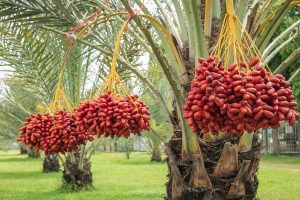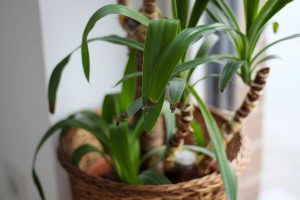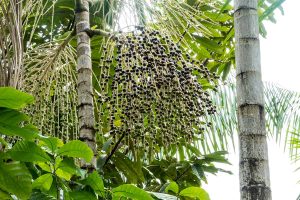Fishtail Palms are an interesting and easily identifiable type of palm, thanks to the jagged edge of their leaves, which make them look like fishtails. These palms do not typically grow from a single stem or trunk, and instead, produce multiple stems in clumps. Many types of Fishtail Palms send out suckers, though not all of them do this.
An interesting fact about the Fishtail Palm is that after a stem has produced a flower, the entire stem will die. This is not usually a problem because the plant has so many new stems being produced that there will still be plenty left to flower in the future.
Fishtail palms make beautiful ornamental plants, but they are also popular as houseplants because they are fairly easy to care for and have an unusual look.
- Botanical name: Caryota sp.
- Common names: Fishtail Palm, Jaggery Palm
- Plant family: Arecaceae
- USDA hardiness zone: 8- 11
- Mature height: Up to 60 feet
- Mature spread: Up to 20 feet
Table of Contents
Varieties of Fishtail Palm
The Fishtail Palm is actually not a specific species of palm, but it is a group of palms belonging to the Caryota genus. There are around 12 different species within this family, and they all share the commonality of foliage which is ragged and therefore resembles the look of a fishtail. Some of the most common varieties of Fishtail Palm are:
Clumping Fishtail Palm (Caryota mitis)
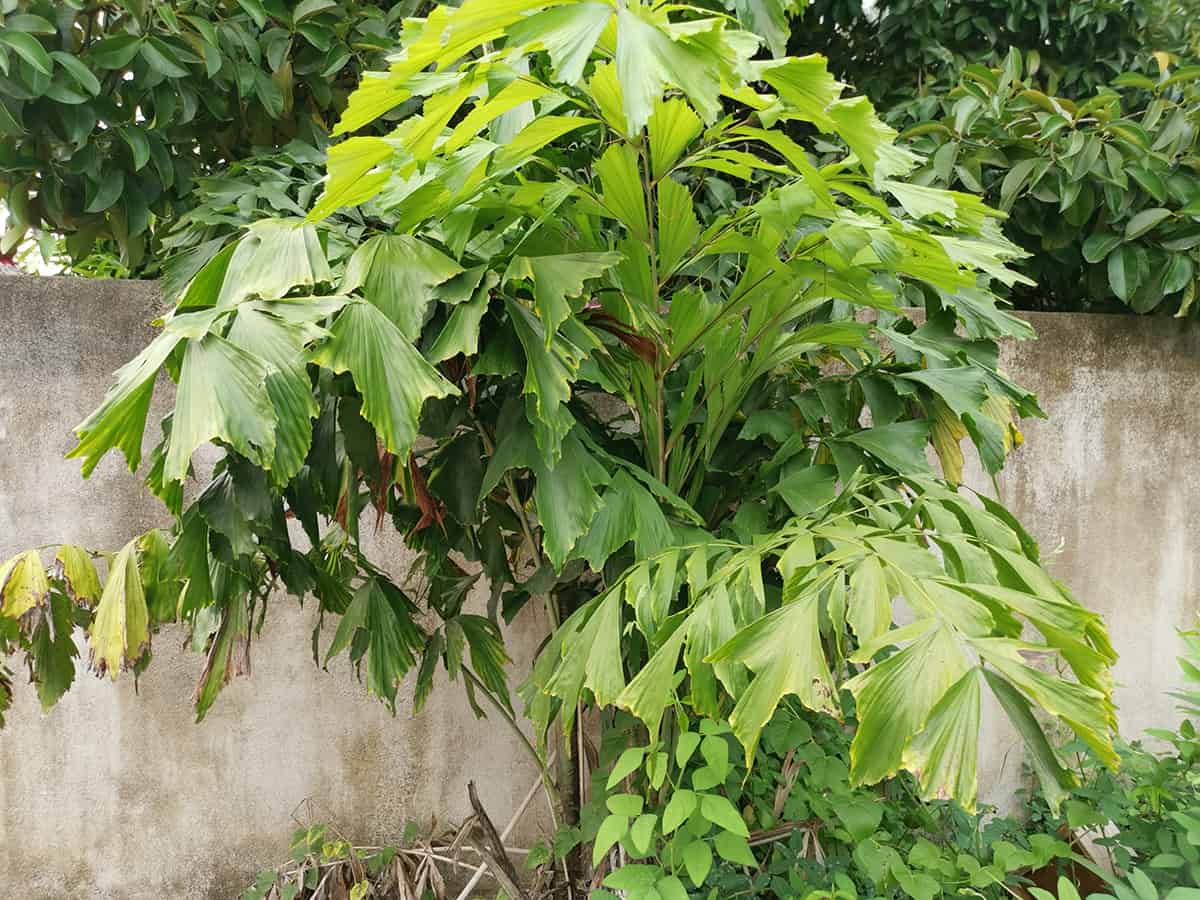
When you see a Fishtail Palm for sale as a houseplant, it is almost always the Caryota mitis species, which also goes by the common name of Clumping Fishtail Palm, Clustered Fishtail Palm, Tufted Fishtail Palm, and Burmese Palm. Many of these names are a reference to the fact that the plant grows in heavy clumps or clusters.
This is a medium-sized Fishtail Palm in its native habitat, growing to typical heights of around 40 feet. When grown as a houseplant it will not usually exceed 6 feet in height. The Clumping Fishtail Palm produces showy panicles of creamy-white flowers, though it is rare for the plant to bloom when it is grown indoors.
Giant Fishtail Palm (Caryota gigas)
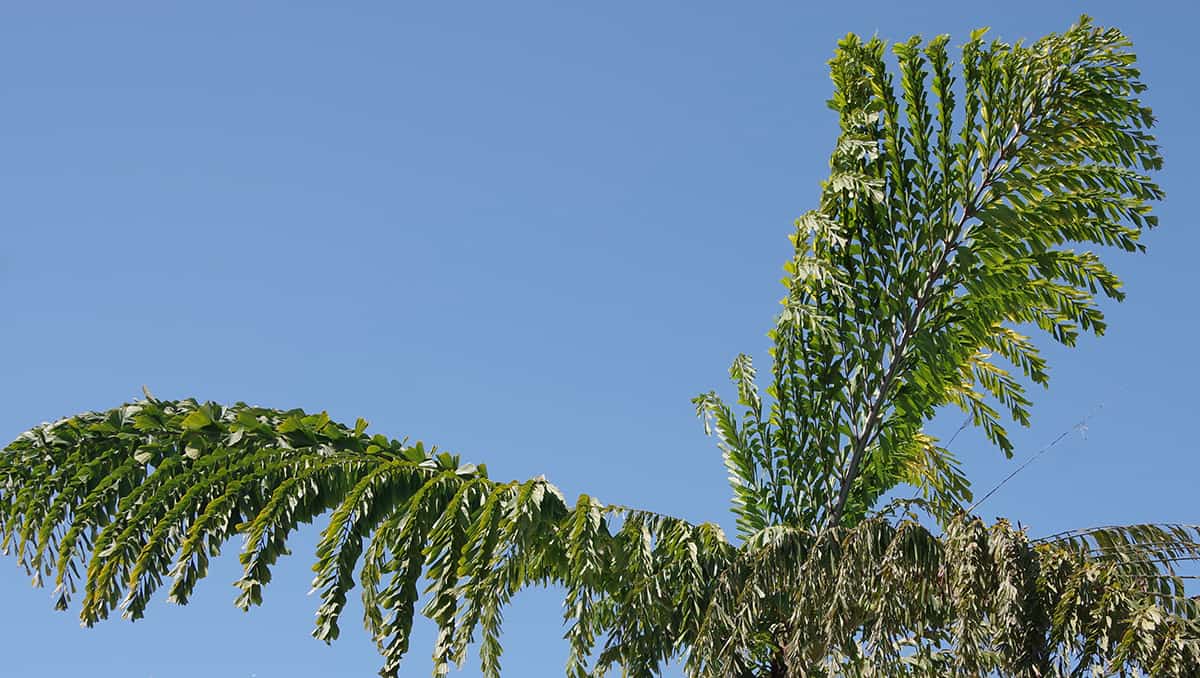
As you may have gathered from the name, this is the biggest of all Fishtail Palms. It usually reaches heights of 60 feet and has an expected lifespan of around 30 years.
It is not grown as a houseplant because it grows too big and too quickly, making it a poor choice for rooms with ceilings. This is one of the more cold-tolerant varieties of Fishtail Palm, which can withstand nighttime temperatures as low as 30 ºF.
Toddy Fishtail Palm (Caryota urens)
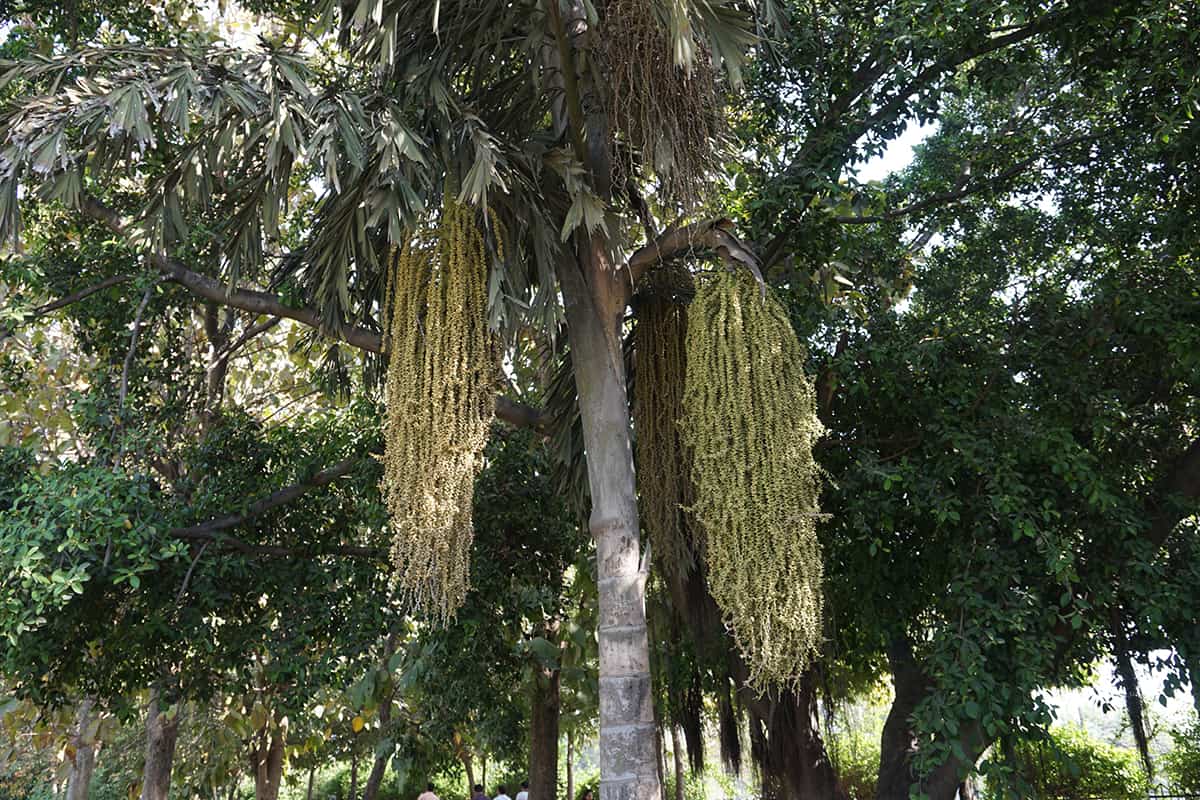
This Fishtail Palm is widely known as the Toddy Palm or the Wine Palm because a liquid sap can be extracted from the trunk of the plant which is alcoholic. Several types of palm trees are used to produce ‘toddy’, but this Fishtail Palm is known to produce palm wine which is especially potent and powerful.
This is a medium to large sized Fishtail Palm, which is capable of growing to a maximum height of 60 feet. It is sometimes grown as a houseplant when young, but it is nowhere near as popular as the Clumping Fishtail Palm. Like all Fishtail Palms, this plant produces fruits that contain oxalic acid, which is a strong irritant. The fruits should not be ingested, and gloves should be worn when handling the fruits or seeds.
Albert Fishtail Palm (Caryota rumphiana)
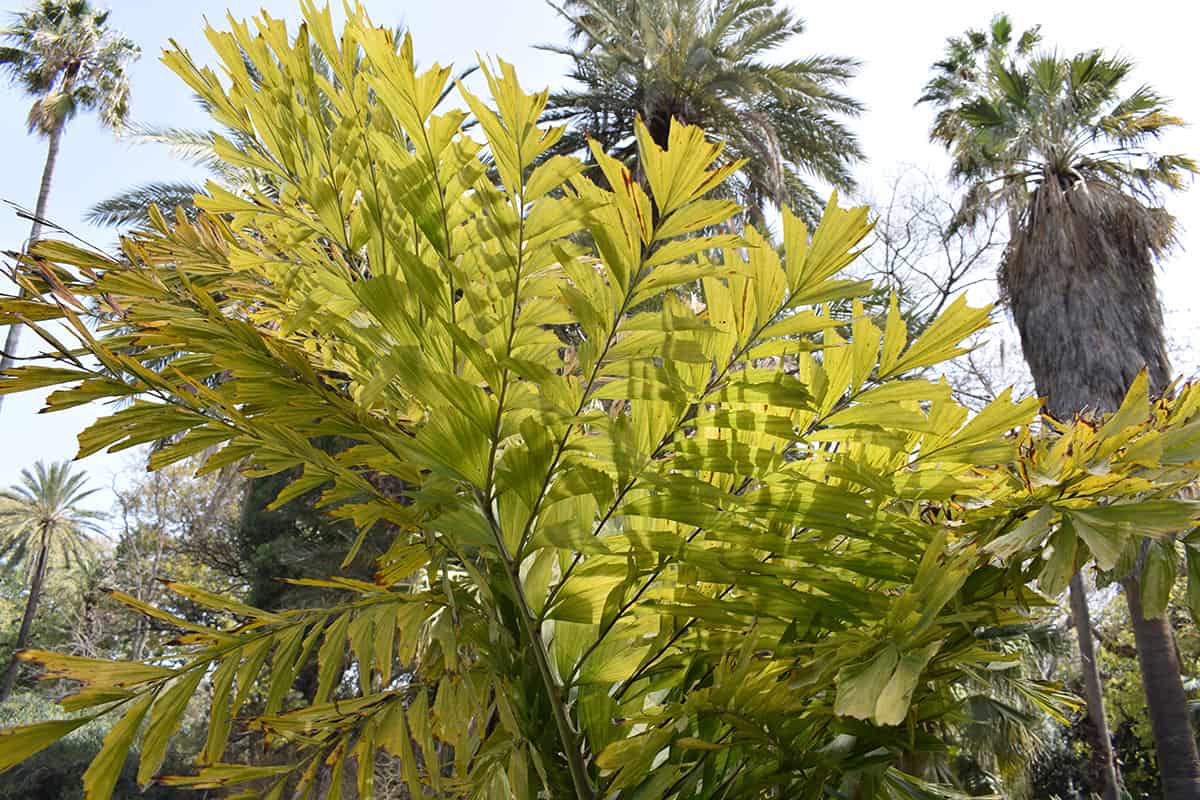
This palm also goes by the common name of Solitary Fishtail Palm, because it differs from most other varieties in that it grows with a singular, solitary trunk, rather than being multi-stemmed. Each frond of this plant can measure a massive 20 feet in length, and they droop gently from the crown of the tree to give it an elegant look.
The flowers produced by this tree are also exceptionally large, measuring as much as 6 feet in length and emerging from between the fronds in groups of three. This is a very adaptable type of Fishtail Palm, which will grow in full sun or in shade. This makes it a good choice for a houseplant if you don’t think you can offer the Clumping Fishtail Palm enough natural light.
Like other Fishtail Palms, it produces instantly recognizable triangular-shaped leaves with jagged edges.
How to Care for your Fishtail Palm
Fishtail Palm plants are native to Asia, the South Pacific, and Australia, but they have become naturalized in other areas of the world, including North America and Africa. In fact, some species of Fishtail Palm are thriving to the point that they have now become an invasive plant in Hawaii and Florida.
These plants are easy to care for, both indoors as houseplants, and outdoors as ornamental plants. Find out here how you can provide the right type of care for your Fishtail Palm.
Light
Fishtail Palms thrive in bright light, however, they are vulnerable to scorching in the intense heat of the afternoon sun, which can make finding the right exposure for this plant a challenge. When grown outdoors, they perform best when they have full sun throughout the morning and late afternoon, and shade in the early to mid-afternoon.
If the plant doesn’t get enough hours of light each day, it will begin to decline. For this reason, when you grow the plant indoors as a houseplant, you will need to choose its position carefully. A west-facing window or southeast-facing window will be best or set it several feet back from a south-facing window.
Soil
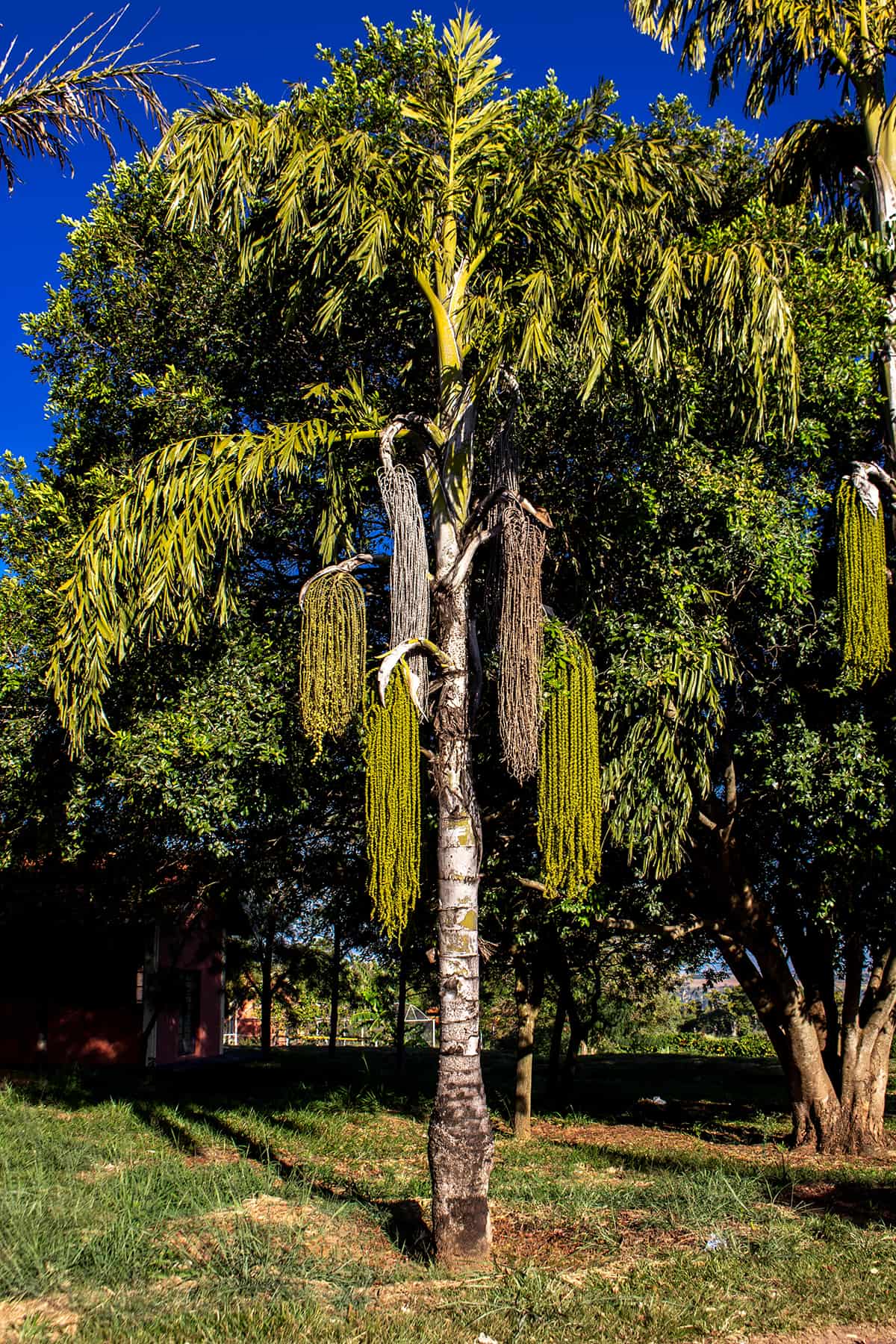
The Fishtail Palm enjoys growing in soil that is moist but not wet, much like most other types of palms. However, it can tolerate dry conditions better than other tropical palms, so its soil can be kept in a soil that is very well draining. This will help to discourage root rot, ensuring that water is drained away from the roots and can escape out of the pots’ drainage holes.
Water
Water your Fishtail Palm with the aim of keeping the soil moist but not soggy. The top inch or two of soil should be able to dry out between waterings, so if this isn’t happening then it means you are watering the plant too often. You can expect to need to water the plant twice a week through spring and summer, and about half this frequency during autumn and winter, however, the climate and the light exposure the plant receives will affect how often the palm needs to be watered.
Palms in warmer and brighter conditions will need to be watered more often than those in cooler or lower-lit conditions. To avoid overwatering your plant, always dip a finger in the soil before you water it. By doing this you can check the moisture content of the soil and get a good feel for how long it takes the soil to dry out.
If the top few inches of the soil are dry, go ahead and water the Fishtail Palm. If the top few inches are still moist, you can wait longer before adding more water.
Temperature
Fishtail Palms are suitable for growing in USDA hardiness zones 8 to 11, depending on the species. Most Fishtail Palms do best in temperatures that range from 65 to 85°F, which makes them ideal for keeping indoors since the average room temperature of homes is 68°F.
These plants will do especially well if you like to keep your home nice and toasty, though if you prefer a cool indoor climate then the Fishtail Palm may struggle to cope. The plant can tolerate short periods of lower temperatures, but it can sustain foliage damage in the prolonged cold. Avoid keeping this plant near a drafty window or an external door that is regularly used.
Humidity
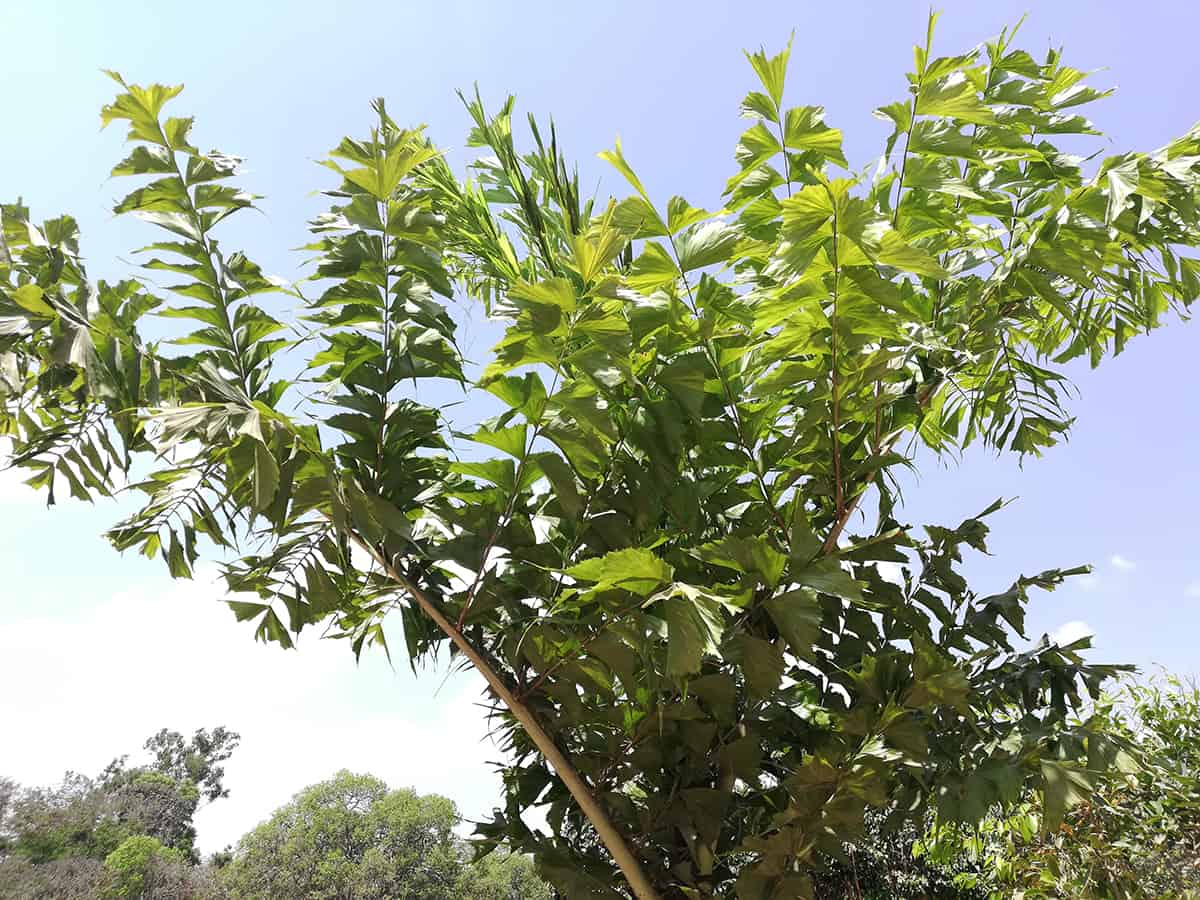
High humidity is a common preference for palms, and the Fishtail Palm is no exception. You can grow this plant in a bathroom or kitchen where the air will be moister as a result of using showers and faucets, or you can find ways to artificially increase humidity. An easy way to raise the humidity around the plant is to spritz the foliage with a water misting bottle, or you can set the plant pot on a pebble tray with water in it.
The Fishtail Palm is able to tolerate average humidity, but you will find it looks its best when the air is more humid. If the air in your home gets very dry, which is common in winter, you should mist the Fishtail Palm to prevent the tips of the fronds from turning brown.
Fertilizer
If a Fishtail Palm is growing in a pot it will benefit from a balanced, diluted fertilizer feed every month through the growing season. Do not apply fertilizer through autumn and winter as this can damage the roots. Fishtail Palms growing in ground soil are not as reliant on fertilizer because their roots can spread further to seek out nutrition.

